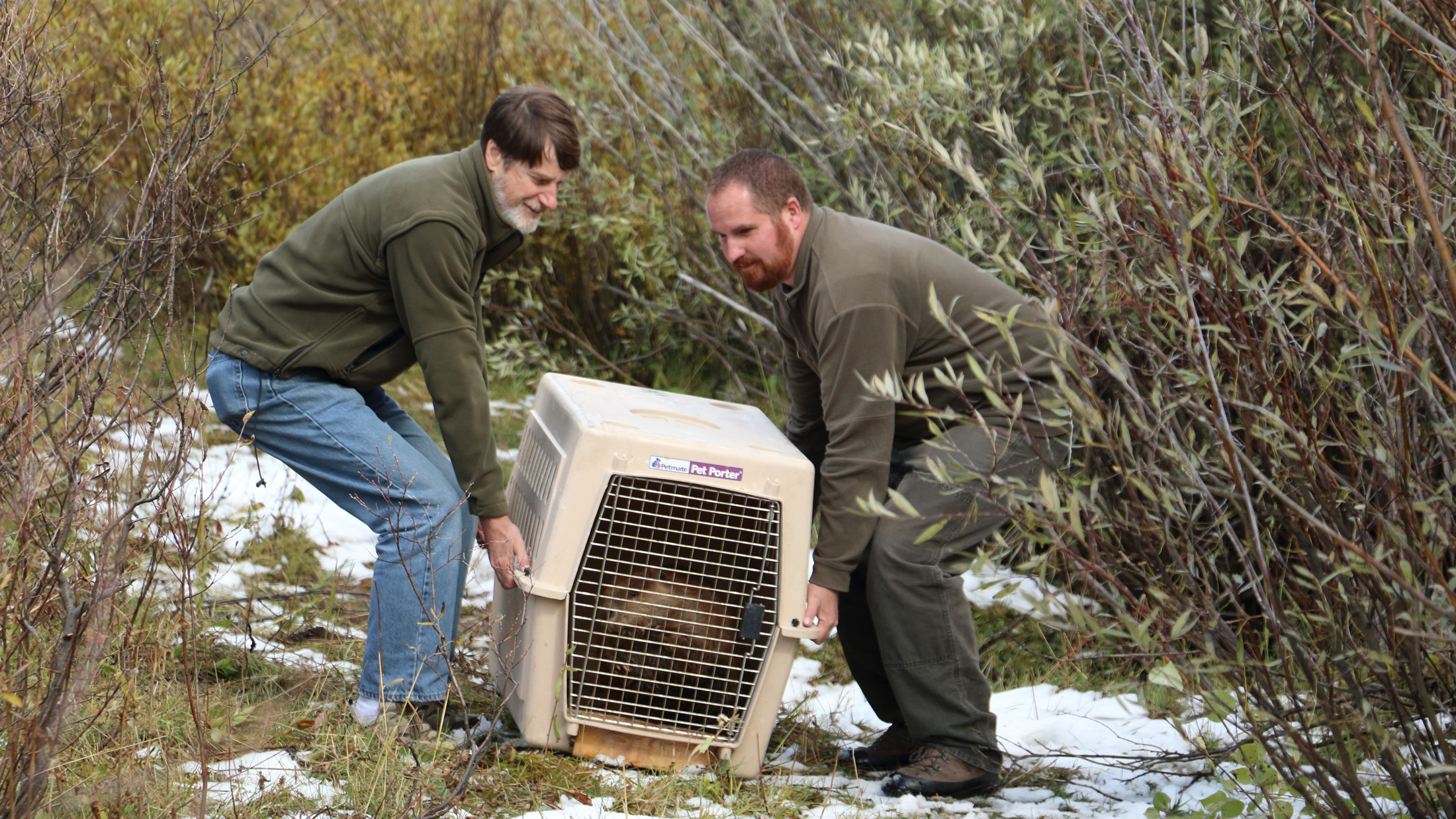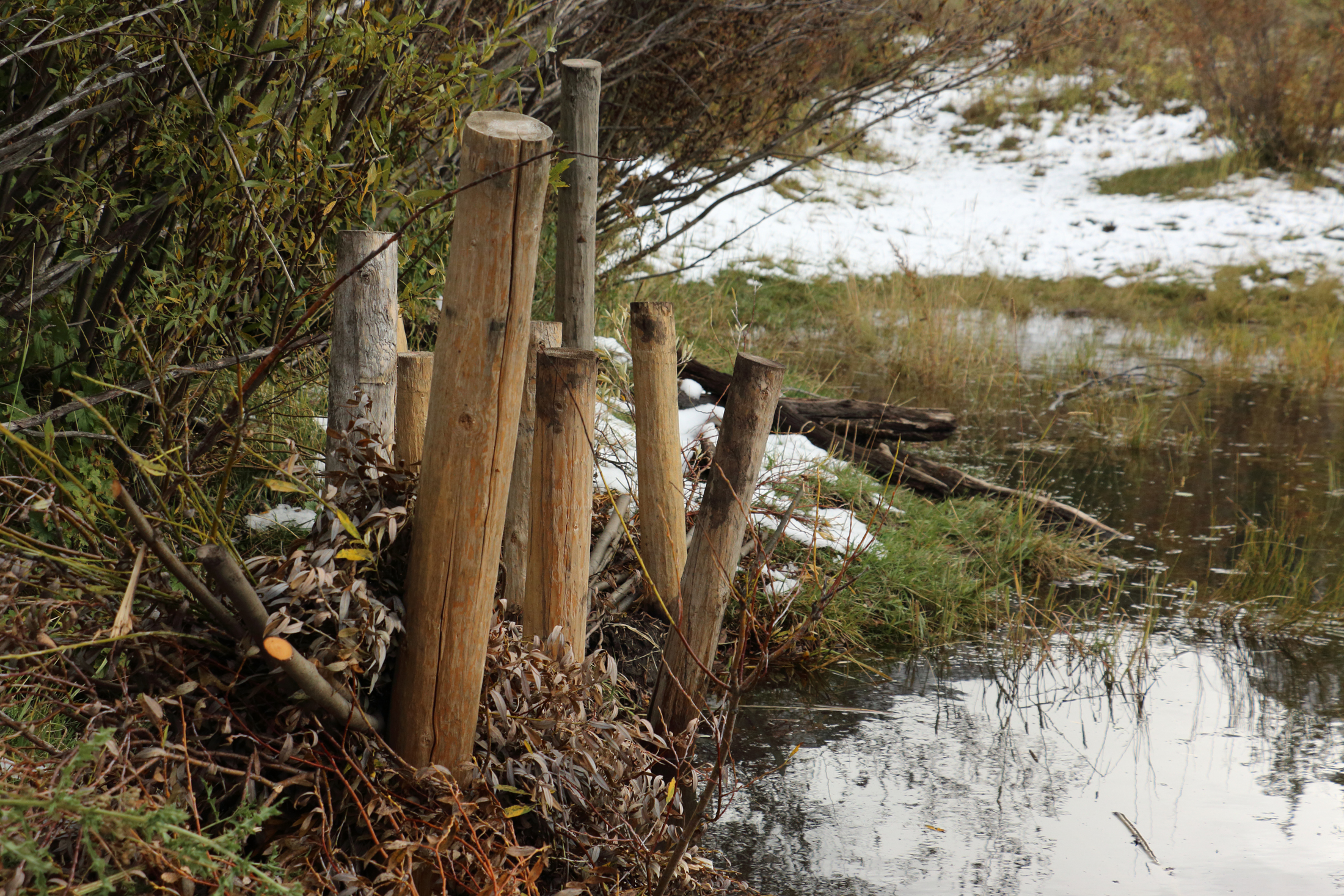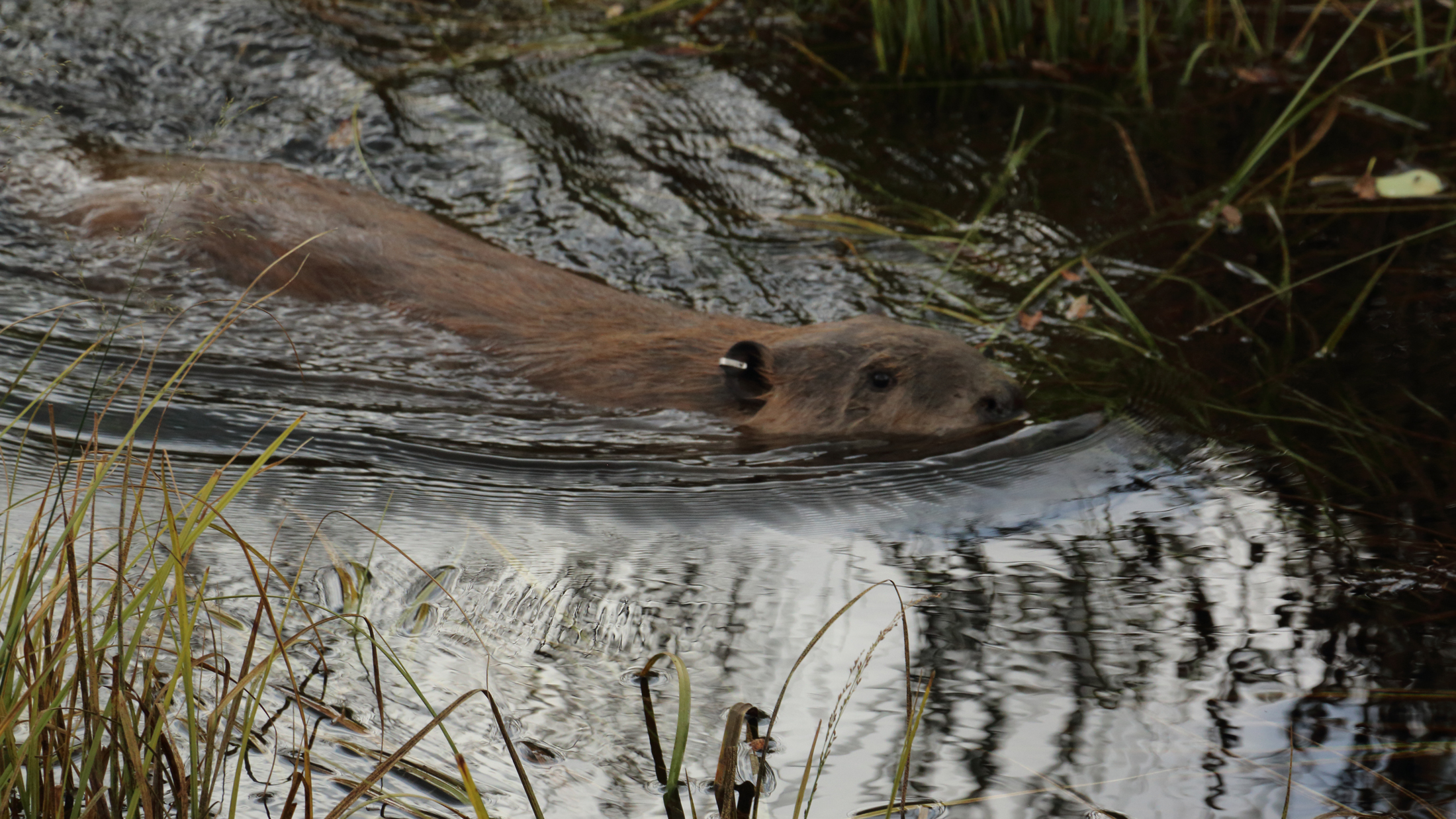I drop the tailgate and eagerly lean the top half of my body toward the bed. I followed this truck for two hours watching two dog crates bounce in the back, but dogs aren’t in the cages. Beavers are. It’s moving day and these two beavers have a new home to build in Idaho’s backcountry.
“Beavers are really nature’s engineers and they do a really good job at what they do,” says James Brower, Idaho Department of Fish and Game volunteer services coordinator. “We love beaver and we love what beaver do.”
But until recently, the same department now moving beaver, was issuing kill permits to eliminate nuisance dam builders. Beavers hear water running and they run to stop it. They also chew, flooding roads with trees toppled by their teeth. Roads close when under water and those trees might be your windbreak.
“Usually we would solve the problem by issuing a kill permit to the land owner. Instead, we’re now trying to work with landowners,” Brower says. “It’s more preferable for us to move that beaver live and have it do its job somewhere else where it’s not causing a problem.”
Through the caged front of the crate, the jostled animals are alert with eyes wide. They’re two of 19 moved in one summer. Traveling by truck is foreign for all of them, but mild compared to the transplant tactics of the 1950s when Idaho’s wildlife biologists dropped beaver in the backcountry via plane and parachute.
“It’s crazy, right? It’s not something people do on a normal basis,” Brower says. “I would have loved to have been a part of that.”

Old footage of the operation is worth seeing and hearing. Narrator with classic, stern voice delivers scripted lines. Grainy film clips spliced together show beaver drop. Box cracks open on impact. Ball of fur lumbers out.
“Pretty fascinating time for sure,” Brower says. “You could definitely get them into places you would not get them otherwise.”
There are more roads today than there were 80 years ago. Most beaver transplants are done within a one-to-two-mile hike from the truck. The two I’m watching are going into Duck Creek. A small tributary near the Idaho-Montana border. Brook trout and cutthroat trout find Duck Creek, but they don’t stay. The creek runs dry most summers and the few parts that puddle are so shallow they freeze in winter.
“The beavers are creating ponds. They’re making places for fish to go,” Brower says. “A lot of people see a beaver dam and they see that as a fish obstruction, but they’re really not. Water flows in and out of a beaver dam. Fish love it.”
Brower recruits volunteers to build beaver lodges and beaver dam analogs before transplants arrive. Beaver dam analogs (BDAs) are man-made clogs on creeks created with posts, mud and willow. The Nature Conservancy also engineers similar BDAs in the West. Human hands can’t make the structure last, but wild paws can.

“The problem is the upkeep. After a month or even a few weeks on their own, they’re going to fail,” Brower says. “The water is going to eat through and it’s gone. But if we put a beaver in that spot, they’re going to look at that artificial beaver dam, hopefully, and want to repair it. Make it better than we do. We know we’re not great at it. Beavers are king when it comes to dam building.”
Transplants, at an average cost of $250 per animal, are moved in pairs or family groups. A solo beaver won’t stay put. For this habitat experiment to work, the beaver has to stay put. Well, as put as any busy animal will. A radio tag on their tail tells Brower if they stay. Sending in a male and female together should help.
I watch the pair leave the crates and transition from dry ground to wet. They sink, surface and swim with purpose issuing a firm tail slap as they survey the pool’s perimeter. They’re probably gauging workload versus motivation.
“We really want them to set up shop and transform that habitat and make it a little better for everything,” Brower says. “Beaver create habitat for not only fish but also for deer, elk, moose and bear. Pretty much everything needs water and places to drink. There’s no doubt in my mind this benefits everybody.”
Outdoor journalist Kris Millgate is based in Idaho Falls, Idaho. See more of her work at www.tightlinemedia.com




Rocky and Bullwinkle were the Original Creators of this method.
This turned out better than the turkey drop on the sitcom WKRP in Cincinnati. But, seriously, this is great news. Hope the reintroductions continue – by whatever means.
Very interesting, and certainly informative! I will send to 2 friends who live on the Jefferson in Cardwell!
Wow! Great! I live very close to Duck Creek and would love to see more Beavers in the whole area of Island Park,their little ponds help all the wildlife,fish and i think their lodges would be great nesting spots for the Trumpeter Swans and their cygnets that have been trying to nest in the area. Their ponds are also natural airconditioners keeping areas they are in alittle cooler. This such great news for the areas wildlife. Thank You for all you do. JoAnn Shults Island Park, Idaho
Please do a follow up in a year or two and let us know if the beavers are thriving in their new locales. I am thinking about deer that were transplanted from the Austin, Texas area to Mexico, and it did not end well for the transplants.
I saw a very good show about beavers on PBS. learned how beneficial they are in helping to keep water in areas that normally go dry. thereby providing drinking water and habitat for many other animals and plants. I hope this project is successful. we need to work together to save animals in these times when humans (we) are encroaching on what used to be their homes. cooperation and tolerance are so important
This is so fascinating! I love whoever thought of this. Go beavers!
THATS FANTASTIC! For generations humans have been at war with the animal world. I have no idea what they were trying to prove. Now fortunately, some humans are trying to work in harmony with nature, slowly, one step at a time. Its the only thing that makes any sense. Neglecting and even killing animals should be as much a crime as killing humans, except in some cases, unfortunately, as food. But animals should never be killed as sport. What gives us the right?
Absolutely fabulous. Thank you S V M(so very much !)
I will now LOVE the Beaver!
Stephen Traub
Attorney (Retired)
New Haven, Milford, CT
Nov 1, 2017
It is refreshing to know wildlife are encouraged to what they do best! Everything man made isn’t better! The Beavers work is a fine example!
Wow! Cool! A ” win-win” situation.
It’s about time!!!
I love this, and the recognition of the value beaver bring. What I wish more people were talking about is that all those beaver in urban areas causing ‘inconvenience’ would also be making a difference to the wildlife, to the waterways and to the areas they populate if we were able to let them. That’s what we found in my city where a flow device allowed the dam to be safely maintained, and beaver habitat brought heron, woodduck, fish, otter and mink. No one needed to move them, we just needed to move public opinion into understanding why they matter.
I wrote and illustrated a book for young readers on the 1948 beaver drop in 2016. It s called ” Beavers Away! ” The idea for the book came from a grad school Masters project on the ability of beavers to mitigate some of the effects of climate change. It is a truly remarkable story!
Love this! I’ve covered beaver management and this is the best solution I’ve seen.